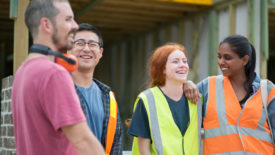Safety Columnists
Eye on Safety
Abatement, communication and advice are key to incendent response
The emergency is over, now what?
November 9, 2023
Eye on Safety
The benefits of telematics solutions and in-cab technology
Eyes on your feet.
October 9, 2023
Eye on Safety
A comprehensive approach to efficiency and well-being
Ergonomics in the warehouse
September 5, 2023
Eye on Safety
Eye on Safety: OSHA's heat hazard emphasis program
What you need to know.
August 7, 2023
Eye on Safety: How housekeeping impacts safety culture
Steps for maintaining healthy safety practices in your business.
July 10, 2023
Eye on Safety: Making safety a part of your culture
Safety culture promotes retention and morale.
June 9, 2023
Eye on Safety: In the blink of an eye
Everything you need to know about eye protection.
March 10, 2023
Stay in the know on the latest PHCP-PVF industry trends.
Get tailored content delivered your way.
JOIN TODAY!Copyright ©2025. All Rights Reserved BNP Media.
Design, CMS, Hosting & Web Development :: ePublishing










